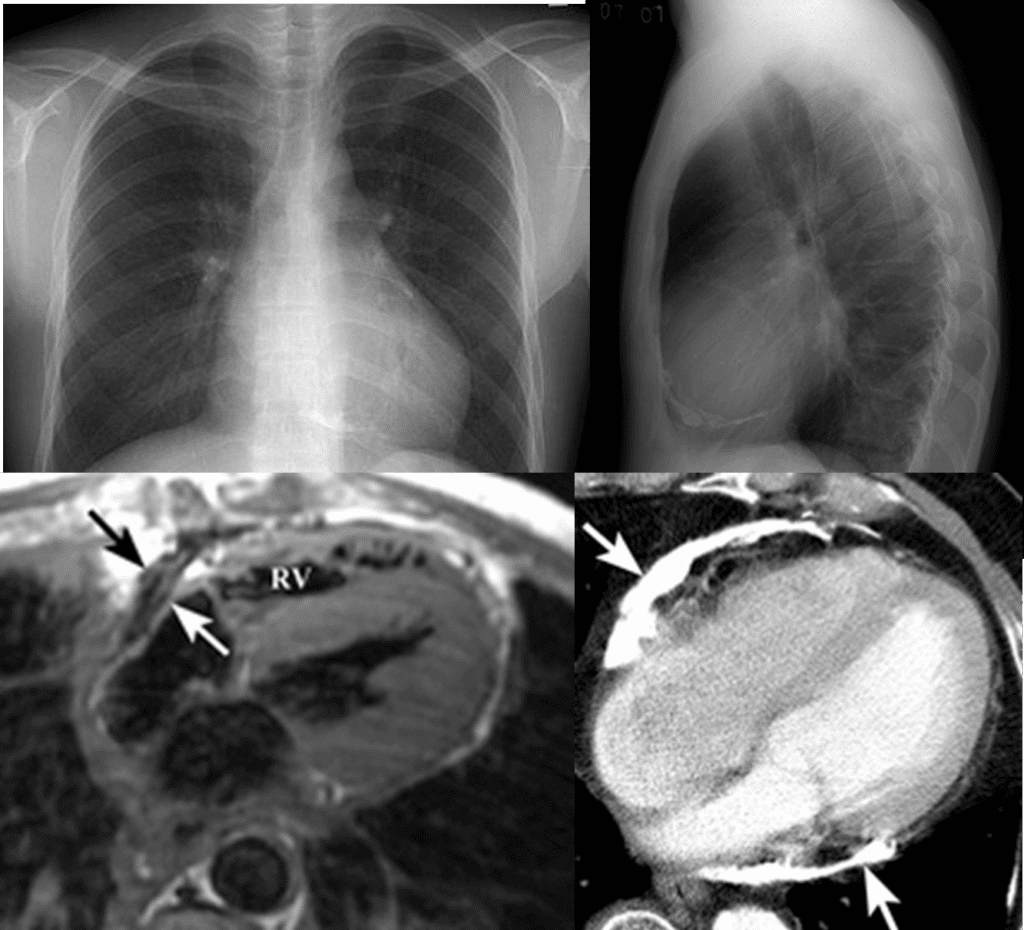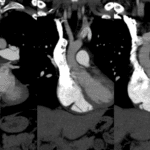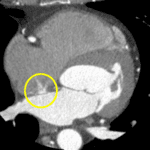Fibrous or calcific constrictive thickening of the pericardium
➜ Diastolic dysfunction (should be differentiated with RCMP)
May follow any type of pericardial effusion and may develop within two or three months of the effusion, or it may take years to develop.
Tbc pericarditis (m/c)
Post-operative pericarditis
Post-radiation
| Restrictive CMP | Constrictive pericarditis | |
| Etiology | Amyloidosis, Sarcoidosis… | Tuberculosis… |
| Myocardial wall thickening | ++ | ± |
| Pericardial wall thickening | ± | ++ (> 4 mm) |
| MRI finding | Global or Multiple patchy enhancement Combined MR, TR | No myocardial enhance, Pericardial enhancement and calcification Paradoxical septal motion |
Important to distinguish
– constrictive pericarditis might benefit from pericardial stripping, whereas those with restrictive disease would not!
Pericardial thickening (> 4 mm) & calcification
– limited to the right side of the heart
– smaller area such as the right AV groove
Neither pericardial thickening nor calcification is diagnostic of constrictive pericarditis
– patient should has symptoms of heart failure


Image from American college of cardiology



